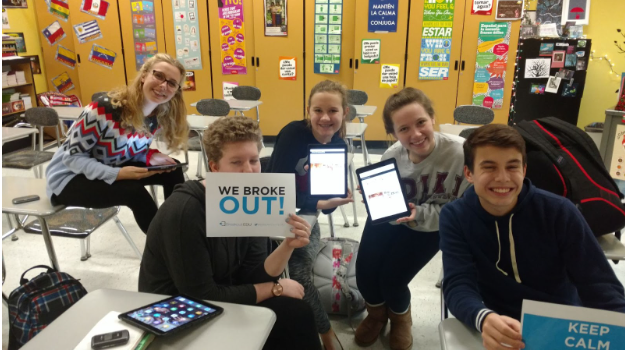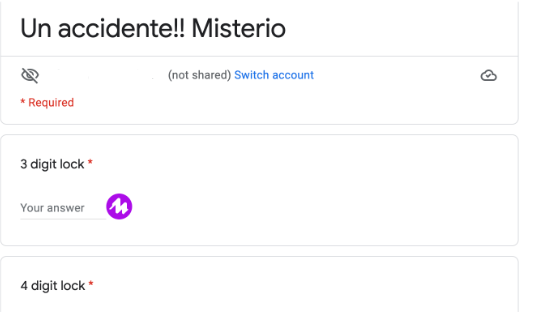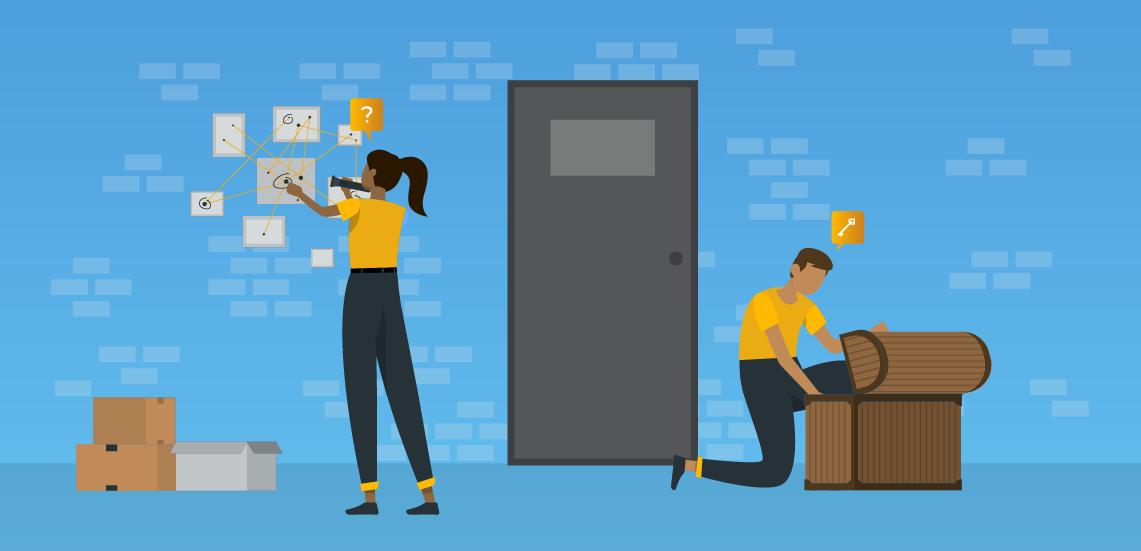Are you looking for a new activity to challenge students to learn in a new way? Students spend a large amount of their school day sitting in their seats and may have few opportunities to move and interact with their classmates. However, there are many different methods that we can bring into our classroom to get students up and moving and more importantly, collaborating.
One of them is the classroom escape room activity!
In my own practice, I’ve found that working together with students sparks innovative and more meaningful ways to build their content area knowledge and essential skills. Since students spend so much time in classrooms, why not plan a quick “escape” to inspire curiosity for learning and engage students?
The classroom escape room: when you need something different!
Escape rooms or digital or physical breakouts are a favorite for many students and teachers. Whether created simply using paper and other hands-on materials or with different digital tools, they help students build their skills in many different areas.
In its essence, an escape room requires that the players escape from some type of a scenario or situation. Teachers typically create a theme to hook students in. The purpose is to engage students in learning, making connections to the content area, while boosting student engagement. The theme also creates excitement for learning!
I think these activities would be great for giving students a chance to work on some of the content that might be more complex or that would benefit from repetition and the development of their leadership skills. We definitely want students to build their collaboration and social-emotional learning (SEL) skills. Escape room activities encourage them to work together towards a common goal, even if sometimes they don't realize it. When I first did a breakout, it was a way to review for midterm exams. Students loved being able to get up and talk with each other. It led to a far better review experience than the other methods that were available to me.
Read more: How edtech helps students demonstrate learning in more than one way
Why escape and breakout rooms are beneficial for students
The goal behind the breakout or escape room challenge is to have students typically in a race against time. Most often they enjoy the game-based learning aspect and want to be the first one to complete it or to escape. Here are some other benefits:
Suitable for any grade level and content area
Methods like these can be really effective because they can be used with any grade level and content area. For teachers concerned about the amount of time that it might take to create one of their own, there are enough resources out there to get started that don't require much time at all. The idea is to simply start with a ready-to-use one and let it be a guide to create your own. Depending on the age of your students, have students create an escape room for their classmates!
Help build SEL skills
Each of the five core SEL competencies is addressed. Beyond building content knowledge, students will build essential SEL skills. As they work through the problems, they are learning and building self-awareness. The frustration that they might experience working through the challenges helps them with self-management. Depending on the topic, they can build social awareness through the content that they're exploring, discussions that they're having or what they're learning from their peers.
Creates meaningful classroom relationships
Escape rooms build relationships as students work together to break out. Additionally, throughout the whole experience, they're making decisions, building resilience, and persist whenever the solutions are not working. Students walk away with excitement about what they have learned in an immersive and engaging learning experience.
 Escape room activity in the classroom. Credit: Rachelle Dene Poth
Escape room activity in the classroom. Credit: Rachelle Dene Poth
How to get started with classroom escape rooms
Teachers can create escape rooms in many different ways, such as:
1. Special breakout kits
For example, the Breakout EDU boxes come as a full kit that has a variety of locks, hint cards, and more. It requires students to work through problems or puzzles and break out. There are many free resources available for educators to get started with that just require the box and thinking about a theme or using some of the many choices available for different subject areas and grade levels.
2. Virtual breakout rooms
For virtual learning, there are also digital breakouts that can be completed in or out of the classroom in small groups using meeting spaces like Zoom or Microsoft Teams breakout rooms. Students will follow the clues and collaborate with their peers to figure out how to solve the problem that will get them to move on to other puzzles and clues.
3. Create escape rooms using Google
You can create a Google Site to house all of the relevant content for the breakout. This means that you can embed a Google form. Alternatively, you can use physical other clues on paper and create a Google Form for the locks and letter combinations. Google Forms are great for your breakouts because they are easy to set up and free to create. You simply create your clues and then decide on number locks, letter combinations and make sure you set response validation so students know if they are correct. You can even add a congratulatory message for when they escape! Check out this tutorial created by a student. Regardless of which you choose, students will enjoy the experience.
 Create classroom escape activities with the help of Google Forms.
Create classroom escape activities with the help of Google Forms.
4. Add special clues
Your clues can be puzzles, riddles, word scrambles, or hints hidden in a website. It can also be writing that generates a code or word to move on to the next clue. Start small and create four or five clues and have students work in small groups of three-four.
Escape rooms can be done at a small scale using paper, mystery envelopes and props placed around the classroom. If time permits, you can create a fully transformed classroom to draw students into the experience.

Read more: 5 Elements that make lessons more engaging
Planning the classroom escape room experience
Here are some steps to help you plan your escape room:
- Identify the learning objectives or specific skills that you want students to master. What are some questions you might ask?
- Decide on a theme to boost engagement. There are a lot of fun themes that you can use depending on what you teach. Is it a period in history, a setting in a book that students are reading, a specific location, a mystery, or something entirely made up?
- Choose the “how.” Will it start via a mystery letter describing the scenario and listing the clues? Maybe someone delivers a box to your classroom? Do you have a Breakout box to pique their interest? Do you need pictures and props in the room? Has your classroom undergone a makeover to represent the theme? Or is it all done through Google Forms? Find what works best for you and your students.
- Figure out how many clues you need. What are the props you might need in the classroom? How will you set up the locks in the box (or online)? Remember that students need to solve a clue to unlock and get to the next clue. Connect the content to the clue and push their problem-solving and collaborative skills. Depending on the specific scenario, we will engage students in more authentic and meaningful learning opportunities.
- If you add in a time challenge, students will build their time management skills. It helps them solve problems, be creative and learn to work under pressure as they complete the challenges.
Building a classroom escape room
As we prepare students for the future, we have to think about essential skills that will be needed in the workplace, such as creativity, critical thinking, collaboration, teamwork, problem solving and innovation. Using different methods like escape rooms can help us provide various experiences for students that spark curiosity and engage them in interactive learning.
While students might have to overcome obstacles and experience failure whenever their solutions don't work, they're doing it with the support of their group!







